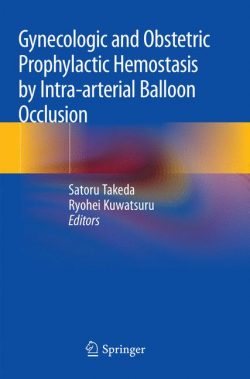This multi-authored book covers most aspects of evaluation of gastrointestinal motility – a field that has been expanding in recent times largely due to advances in diagnostic modalities; coupled with this, new evidences supporting best practices have increased the interest among clinical gastroenterologists, researchers, teachers and trainees in gastrointestinal motility and its disorders. New advances in the field of evaluation of functional bowel diseases and motility disorders, such as high-resolution manometry, 24-h pH impedance monitoring, Bravo capsule pH-metry, barostat, balloon expulsion test, barium and MR defecography, biofeedback, hydrogen breath tests, motility capsule (smartpill) etc. have significantly expanded the scope and outcome of treating these disorders.
The chapters have been contributed by a well-conversant group of experts from the global academia, including India, Singapore, Thailand, Korea and Australia, integrating the body of knowledge on evaluation methods with evidence of best practices for the management of motility disorders. A chapter on how to set-up a manometry laboratory provides key information for clinicians and researchers who are planning to start working in this area.
With 11 chapters in the book supported with numerous tables, flow charts, schematic diagrams and images, professionals will find it an essential reading.
This volume features chapters written by experts from global academia, including from India, Singapore, Japan, Taiwan, Europe and USA, integrating knowledge on evaluation methods with evidence of best practices for the management of motility disorders. Overview of the Manometry Machine.- High-Resolution Esophageal Manometry: Principles, Technique, and Interpretation.- Colonic Transit Study by Radio-Opaque Markers.- Technique, Interpretation and Clinical Application of Anorectal Manometry and Balloon Expulsion Test.- Defecography: Technique, Interpretation and Clinical Application.- Therapeutic Application of Manometry: Biofeedback for Management of Fecal Evacuation Disorders.- Approach to Patients with Refractory Constipation.- Overview of Hydrogen Breath Tests in Gastroenterology Practice.- Catheter-based 24-h pH-metry and Impedance: Technique, Interpretation and Clinical Application.- Summary of Criteria for Diagnosis of Motility Disorders.- Manometry Report Format
“This book provides a fairly thorough evaluation of gastrointestinal motility, a subspecialty of gastroenterology that has been gaining increasing interest in recent years. … Although intended for practicing clinicians, the book can be useful for trainees as an overview and reference. … This is a good quality book.” (Nicole E. Pisapia, Doody’s Book Reviews, March, 2017)
Dr. Uday C Ghoshal, MD, DNB, DM, FACG, RFF is Professor in the Department of Gastroenterology, faculty-in-charge of the Gastrointestinal Pathophysiology and Motility Laboratory, Adjunct Professor of the Centre for Biomedical Research, SGPGI Campus, Lucknow, India. He has published more than 240 papers. He is a member of Rome-Asian working team, Rome Working Team on Multinational, Cross-Cultural Research and Intestinal Microenvironment and FGIDs committee of Rome Foundation, Fellow of Rome Foundation and Co-Chair of Rome Research Committee. He is a Fellow of American College of Gastroenterology, and a member of Indian Society of Gastroenterology, Indian National Association of Study of Liver, Society of Gastrointestinal Endoscopy of India (Governing Council Member) and Association of Physicians of India. He is a founder member and the Secretary General of Asian Neurogastroenterology and Motility Association and Honorary Secretary of Indian Motility and Functional Bowel Disease Association. He is currently an associate editor of J Neurogastroenterology and Motility, editorial board member of J Gastroenterol Hepatol, World J Gastroenterol and American J Robotic Surgery. He is also a peer reviewer to 35 international journals. He is in the advisory board of Nature Reviews Gastroenterology and Hepatology. He is the National Coordinator of Indian Society of Gastroenterology Task Force on IBS. He is also the Chair of Epidemiology and Infection section of Asian IBS Consensus and Asian Dyspepsia Consensus Teams and member of Asian Barrett’s Consortium. He has received 33 awards and orations including 8 gold medals during MBBS study. He was a visiting clinician to Mayo Clinic, Scottsdale, USA, Hamad Medical Corporation, Doha, Qatar, and WHO Fellow in Prince of Songkhla Univeristy, Hat Yai, Thailand.
This multi-authored book covers most aspects of evaluation of gastrointestinal motility – a field that has been expanding in recent times largely due to advances in diagnostic modalities; coupled with this, new evidences supporting best practices have increased the interest among clinical gastroenterologists, researchers, teachers and trainees in gastrointestinal motility and its disorders. New advances in the field of evaluation of functional bowel diseases and motility disorders, such as high-resolution manometry, 24-h pH impedance monitoring, Bravo capsule pH-metry, barostat, balloon expulsion test, barium and MR defecography, biofeedback, hydrogen breath tests, motility capsule (smartpill) etc. have significantly expanded the scope and outcome of treating these disorders.
The chapters have been contributed by a well-conversant group of experts from the global academia, including India, Singapore, Thailand, Korea and Australia, integrating the body of knowledge on evaluation methods with evidence of best practices for the management of motility disorders. A chapter on how to set-up a manometry laboratory provides key information for clinicians and researchers who are planning to start working in this area.
With 11 chapters in the book supported with numerous tables, flow charts, schematic diagrams and images, professionals will find it an essential reading.
Provides detailed reviews on GI motility covering its evaluation, diagnosis and treatment
Covers all major technological advances in evaluation of motility
Written by leading experts known for their research and published work in this area
Includes two chapters on “setting-up a manometry laboratory, and “manometry report format” that help professionals who are starting work in this area





